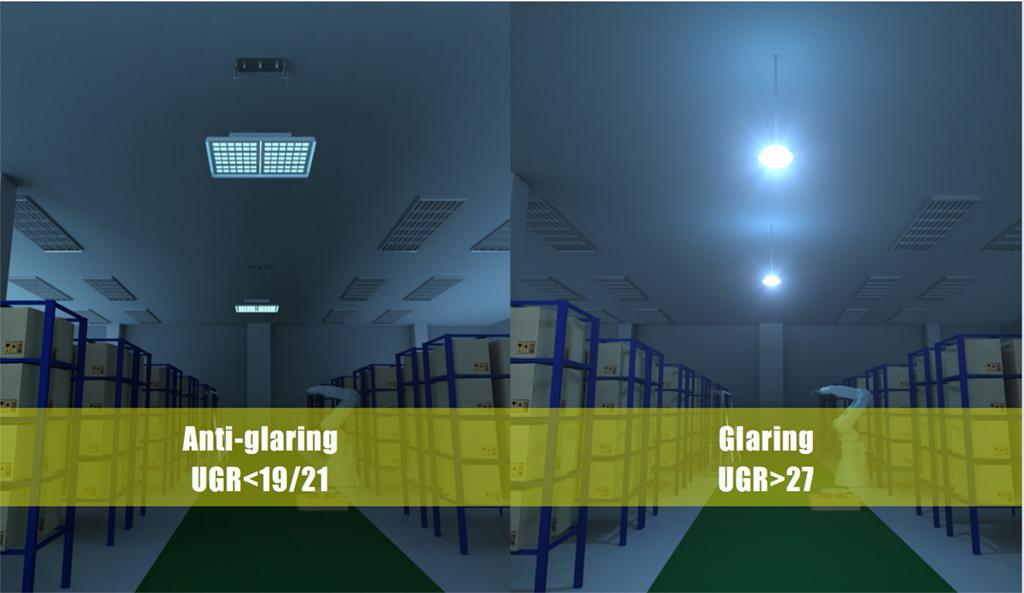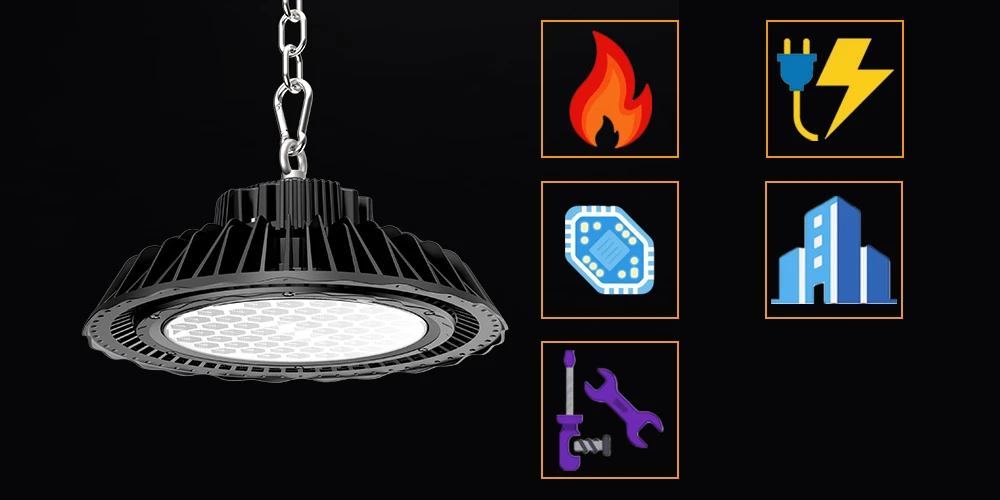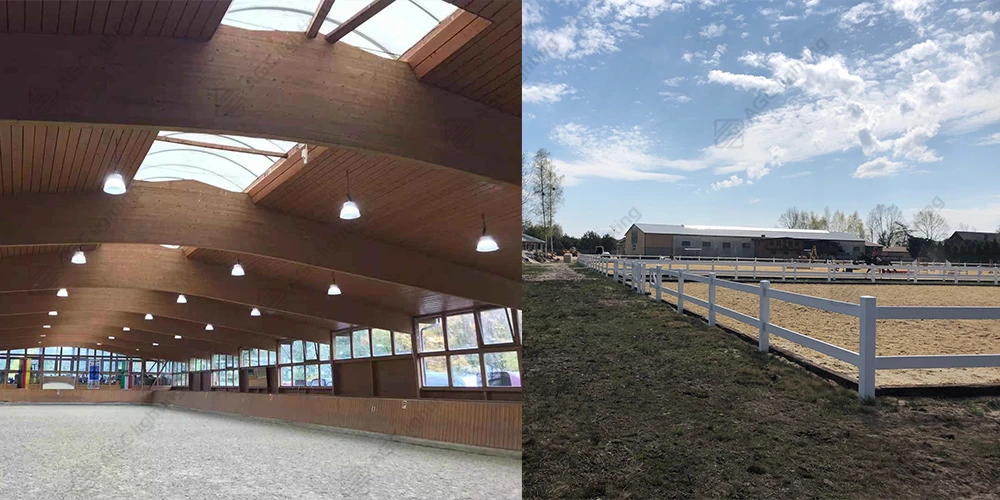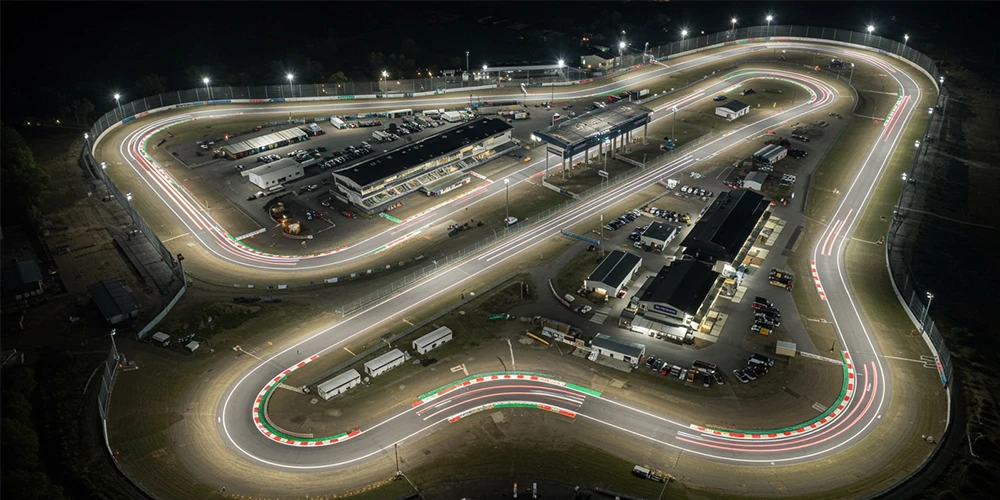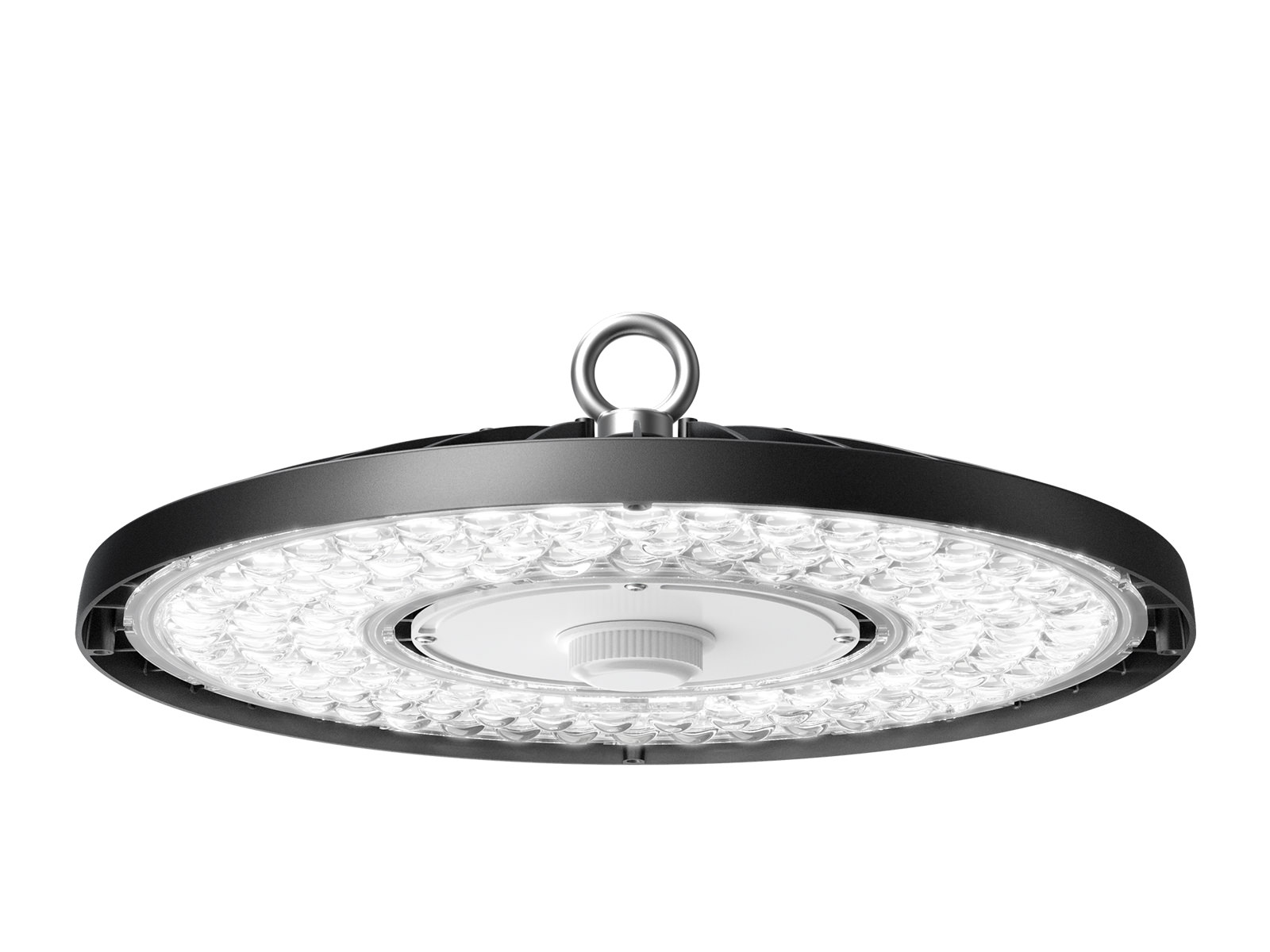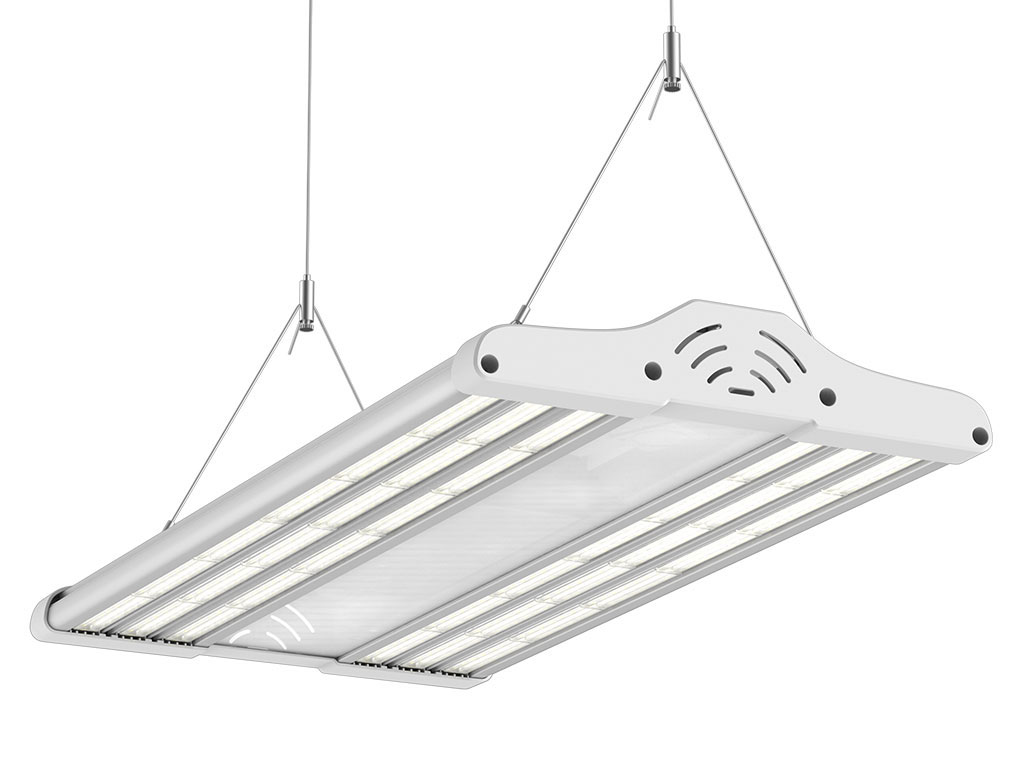When you search the luminaires to set up or upgrade your lighting system, some of the sellers may indicate “UGR<19” as one of the key features of their products. But what is UGR and why should UGR be less than nineteen? It seems too strange to make sense as most people do not have a deep understanding of UGR, as it is the acronym for Unified Glare Rating. This post will show you the basic knowledge about UGR. Hope it can help you understand UGR better and purchase the fixtures that meet all your requirements.

What is Glare
To comprehend UGR more easily, let’s talk about what glare is. Glare refers to the visual conditions that cause visual discomfort and reduce the visibility of objects due to unsuitable brightness distribution in the field of view or extreme brightness contrast in space or time. There is a sense of light in the visual field that the human eye cannot adapt to, which may cause disgust, discomfort or even loss of clarity. Whether it is outdoors or indoors, glare appears everywhere. For example, glare will be generated by the high beam of a coming car. A luminaire with excessive brightness will also cause glare in the office or at home.
Glare can be divided into discomfort glare and disability glare.
Disability glare is the glare that will decline visual effect and visibility, which generally comes with discomfort. It is caused by the high-brightness light source in the field of view entering the eye, scattering in the eye, and causing a decrease in the clarity and contrast of the object image on the retina.
Discomfort glare is often caused by improper lighting distribution or over brightness lighting source on the visual field. Discomfort glare normally will not do harm to visual function, but people will feel uncomfortable.
Long-term exposure to glare can cause visual fatigue and damage to one's eyesight. In addition, the glare is very annoying as it often causes people to feel anxiety, lack of concentration, and other psychological discomfort. It would cause serious insomnia and headaches.
What is UGR
UGR (Unified Glare Rating) is a measure of the glare from all visible luminaires indoors adopted by the CIE (International Commission on Illumination). It is a psychological measure of the subjective response of the light emitted by a lighting device in a visual environment that causes discomfort to the human eye. UGR is not a mandatory regulation but an industry standard formulated by CIE to create a better lighting environment and protect the health of consumers.
We need to emphasize two points. First, UGR is used to measure discomfort glare, not disability glare. Secondly, UGR scales the discomfort glare indoors, not outdoors.
It is not difficult to learn about why UGR is a measure for discomfort glare. Simply because the luminaires with disability glare are not qualified and will do harm to the eyes and health. There is no need to consider disability glare if you purchase the qualified luminaires. The reason for UGR scales of the discomfort glare indoors is related to the measurement of UGR. All glares are annoying. What we need to do is to minimize UGR and then offer a more comfortable lighting experience for customers.
How to calculate UGR
UGR is calculated by a formula that includes a number of factors that may affect glares caused by a luminaire. It ranges from 5 to 40. The lower the number, the less discomfort glare. The formula is as follows.
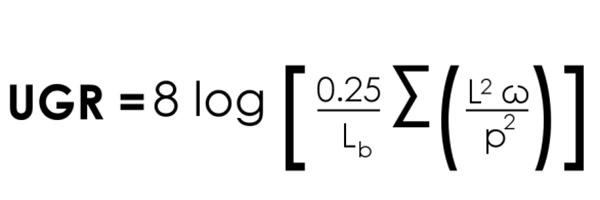
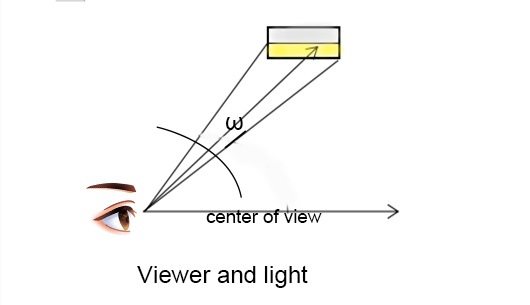
- L: The luminance value of one luminaire
- Lb: The value of the background luminance (cd/m²)
- ω: The solid angle of the luminaire seen by the viewer
- P: The Guth position index. Based on the likelihood of glare, also known as Visual Comfort Probability
- Σ: The sum includes all the luminaires located within the area.
The formula seems to be precise as it requires the accurate value of each parameter, but it is hard to work with when it comes to reality. The parameters are difficult to measure. Thus, UGR is calculated by professional lighting design software like Dialux.
To put it simply, total lumen, lighting beam angle, and lighting surface area are three main factors that affect UGR. It is concluded as:
- Higher lumen with higher UGR
- Smaller lighting beam angle with lower UGR
- Bigger lighting surface area with lower UGR
A UGR value exceeding 28 is unbearable for most people, while 19 to 22 is endurable. For the workplace and classroom, the UGR value ranges from 16 to 19 is acceptable. If the URG values are from 10 to 13, the glare is barely perceptible.
There is a simplified recommendation table for different workplaces or rooms as follows.
Recommended UGR limits |
|
|
Type of area |
Maximum allowed UGR |
|
Warehouse, foyers, course |
28 |
|
Heavy industry |
25 |
|
Kitchen, cinema, bakeries |
22 |
|
Office |
19 |
|
Classroom, drawing room, |
16 |
|
Operating room |
10 |
Of course, just getting this table is not enough because it is not always accurate. From the formula, we know that UGR is applied to lighting installations, not fixture fitting. As UGR is calculated by software that simulates lighting installation in a standard room, the values can not represent real situations. There are many other factors that affect UGR, such as the size of the luminous surface, luminous intensity, type of light distribution, etc.
Therefore, the luminaires described as “UGR<19” means this type of luminaire has a lighting distribution with UGR less than 19 in a specific space designed by the manufacturer. The space is in a pre-determined size and a certain height from the viewer to the luminaires. In sum, the UGR value can be used as a reference for whether and how likely we would feel discomfort by the glare in specific environments, but it is not necessarily accurate in the actual environment.
How to minimize UGR
We know that the luminaires with high UGR value would cause anxiety, lack of concentration, and other psychological discomfort. It can even cause serious insomnia and headaches. In this case, what we should do is minimize UGR during the design and installation of luminaires. As mentioned previously, total lumen, lighting beam angle, and lighting surface area are three main factors that influence UGR. Therefore, the methods to reduce UGR are as follows:
- Decrease total lumen
- Use decoration materials in low gloss for the surface
- Avoid installing lamps in interference areas
AGC always focuses on offering a better lighting effect to our clients. We offer a solution to minimize UGR in an acceptable and more comfortable range. We use an engineered grille textured lens to change the lighting distribution. The picture below shows the huge difference with different glare conditions. For more information on our LED solutions, please contact us.
